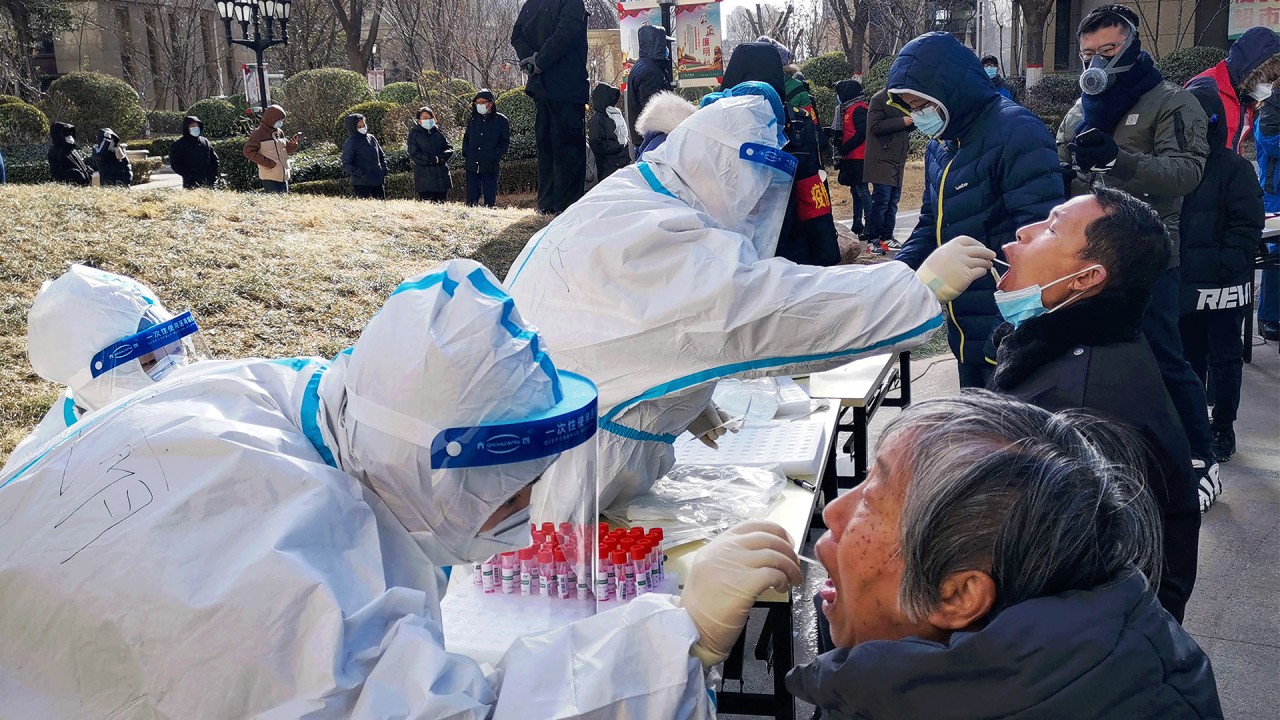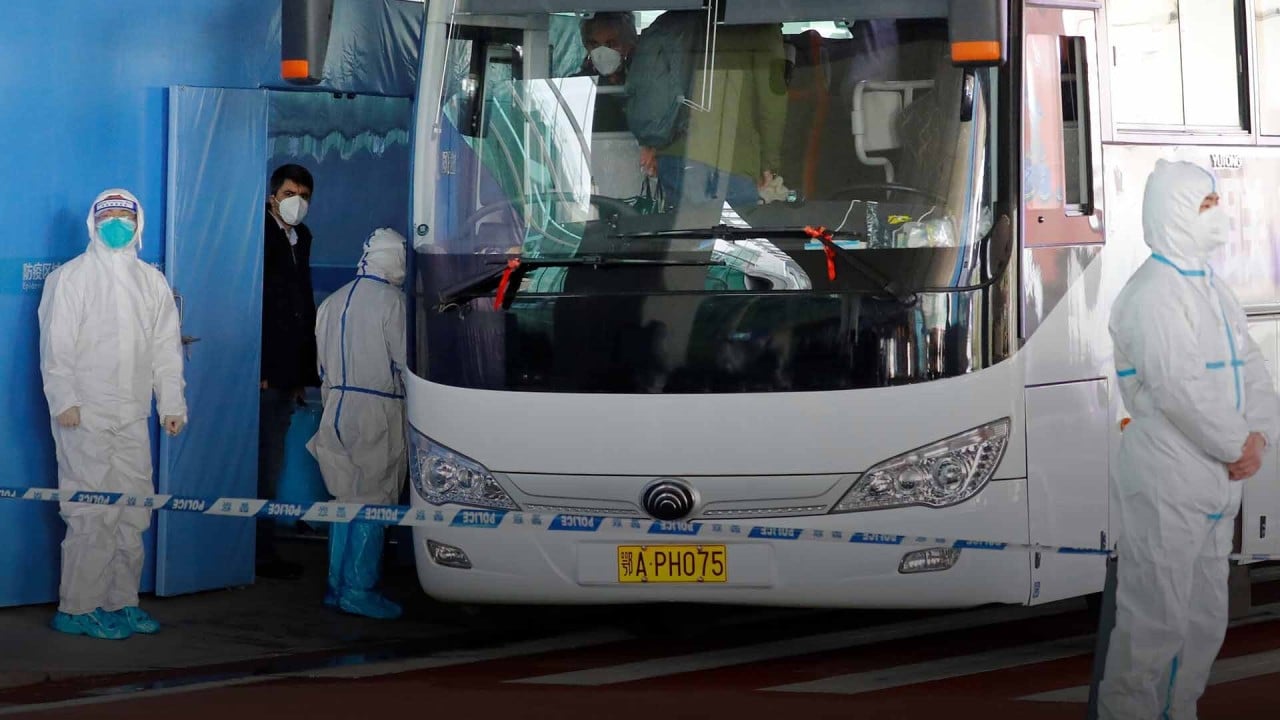
As Chinese cities face new Covid-19 lockdowns, have lessons of 2020 been learned?
- Echoes in Hebei of measures a year ago in Wuhan, with students stranded in icy conditions and some people unable to get routine medical treatment
- Residents complain of mistakes being repeated, as countries continue to struggle to balance a speedy response with the public’s wider needs
Over 2,100 students were stranded in Shijiazhuang, the provincial capital, and the number was growing as more cities in the province went into lockdown. Universities have been told to check the status of every student and offer emergency assistance funding, the education bureau said on Tuesday.
This came after a video went viral showing students on the streets in subfreezing temperatures with nowhere to go after universities closed for the winter holiday last week. The city had stopped public transport and hotels did not have space or charged prices students could not afford, according to a report by China News Weekly.
“Authorities in Shijiazhuang did not seem to learn from the experience of Wuhan last year,” said a post shared by Xu Fuqun, the deputy editor-in-chief of Communist Party newspaper China Society News. “It is easy to make spur-of-the-moment decisions, but they don’t seem to have thought seriously about the problems that follow.”
Published on Weibo, China’s equivalent of Twitter, the post outlined a long list of issues that arose as the Shijiazhuang lockdown took effect, such as medical staff being unable to get to work without public transport and residents running short of daily necessities.
Xu declined an interview request from the South China Morning Post and said that he did not write the post, but shared it on behalf of the unidentified writer. It was liked by almost 700,000 users and reposted over 165,000 times before being deleted on Thursday.

01:33
Elderly man taken to ground by officers after refusing to take Covid-19 test in China
Shijiazhuang residents on social media cited more confusion than precision, complaining of unclear information on how to get medical treatment other than for Covid-19, among other struggles.
A woman in her 32nd week of pregnancy, carrying twins, said on Weibo that she had contacted at least seven hospitals for a prenatal check-up but was rejected because her area had been designated as medium-risk for Covid-19 infections.
This was despite official guidelines from the Shijiazhuang Health Commission stating that medical services for pregnant women and other patients requiring urgent treatment would continue as usual.
“I just want to say, I really did not feel any warmth, only helplessness,” the woman wrote on Thursday. “I don’t know how many other patients in medium-risk areas are facing the same dead-end cycle like I am.”
Her story gained attention online and the Chinese Medicine Hospital of Hebei contacted her and offered assistance, according to a post she published later the same day. The woman did not respond to a request for comment.
China’s containment of Covid-19 has been viewed as a success, which after the early chaos in Wuhan saw local transmission of the disease almost completely eliminated. This has been attributed by authorities to the country’s authoritarian government structure and a population that mostly complied with orders.

02:11
China reports first Covid-19 death in eight months; quarantine site construction underway in Hebei
Michael Baker, an epidemiologist and a member of an advisory group to the New Zealand government, pushed for a strategy to stamp out the virus, taking some lessons from the containment in Wuhan, but stated that the type of government was not the issue.
“Succeeding does not depend on your form of government and even the methods you use,” Baker told the Post. “You’ve got countries that have taken authoritarian approaches, like mainland China. You’ve got places that have achieved the same end with much more public engagement and persuasion, like Taiwan.”
Baker and his colleagues wrote a paper on a strategy to eliminate Covid-19, rather than just contain it, which was published in the British Medical Journal in December.

01:47
WHO health experts arrive in Covid-19 epicentre Wuhan to investigate origins of coronavirus
The strategy includes informed input from scientists, political commitment, sufficient health care infrastructure, public engagement and trust in the measures being taken, along with a social safety net.
However, Baker said he understood that for Chinese cities such as Shijiazhuang, which has a population of 11 million, there may not be many choices.
“From a distance, it often looks quite brutal, the scale of the operation,” he said. “When you’ve got 10-plus million people in quite a big city, you haven’t really got many options.”
Countries have to make a trade-off between protecting the population and individual freedoms, according to Baker.
In the United States, which has the world’s highest Covid-19 death toll, the response has been fragmented, with many states reluctant to introduce lockdowns. Some residents also protested against public health measures such as mask-wearing, saying they infringed on personal liberty.
“It’s one of those trade-offs,” Baker said. “If we were standing back dispassionately, the alternative would be tens of thousands of people dying versus a very tough, regimented system. The mortality rate in China is among the lowest in the world. So it is quite complicated.”


